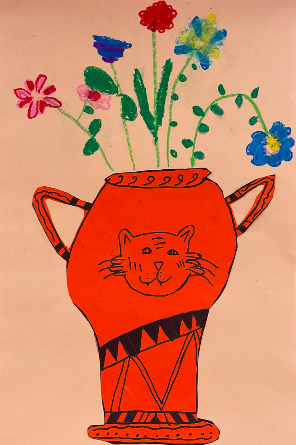Symbolism, Pattern, and Leigh Ellexson–Third Grade Project
As kids get older, they get more skeptical of teachers, which is why I think it’s important to try to relate to students in the classroom. I opened this lesson with something that nearly all my kids (yes, even the no-screens-allowed kids) in my third grade know about: emojis.
Once the kids are hooked with something familiar (and we talk about our favorite emojis), we define symbolism: a picture that tells us something. While there are broader definitions and ones that can expand beyong the art classroom, this definition is a good starting point for third grade. We discuss that a symbol can tell us a lot of information, usually without needing words to do so.
After a brief discussion about symbolism on pottery (a great way to get these kids excited and ready for upcoming ceramics projects) we fast-forward through art history to a contemporary illustrator: Leigh Ellexson. Leigh isn’t really known for one genre or another, but more for her loose style and her willingness to experiment with mediums. I chose her as an example for my third graders since her content matter is school-appropriate, so I felt more than comfortable sharing her art and videos. I even had a few students come back the next day and told me they enjoyed watching her at home!
In this video (which I clip down), we watch as Leigh explains her artistic choices in this drawing. We discuss her use of materials, how much space she leaves on the vase for her symbols, and especially how she creates pattern. Again, our definition of pattern at this age is “something that repeats,” be it lines, shapes or colors. Examples of patterns to use are available on the classroom TV for students to integrate into their own work, so no tracing is possible.
For their symbols, I had students pick a symbol that said something about themselves. This is the grade where we start introducing them to uploading their art to Artsonia, and so they answered questions about their work and the meaning of their symbols there. The lesson plan and state standards for this project can be found here, and the Google Slides presentation I made can be found here. Thanks for reading!








